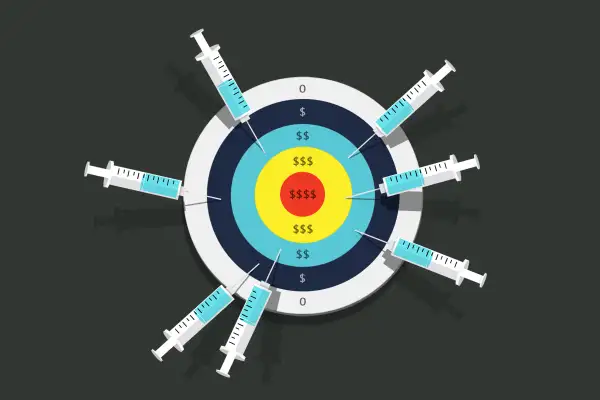Treatment for COVID-19 Is Getting a Lot More Expensive

If medical evidence hasn't convinced COVID-19 vaccine holdouts to get their shots, maybe the growing prospect of a big financial hit will prompt them to roll up a sleeve.
That's because if you require hospitalization for COVID-19 now, it’s becoming much more likely you'll have to foot a larger portion of your bill than you would have earlier in the pandemic. With vaccinations now widely available, health insurance plans are dropping waivers on co-pays and deductibles for patients who get the disease.
Introduced (mostly voluntarily) by employers and insurers early in the pandemic, the waivers were once almost universal, with nearly nine in 10 health insurance carriers (88%) granting them for at least some period, according to a November 2020 survey by the Kaiser Family Foundation.
“Insurers were sitting on a ton of cash, because people were deferring non-COVID care due the pandemic,” says Sabrina Corlette, research professor at Georgetown University's Center for Health Insurance Reforms. “So for reasons both altruistic and with public relations in mind, the waivers were put in place as a way to use that money.”
The proportion of people still covered by such waivers has now plummeted. Only a little over a quarter of major employers are still providing COVID-19 waivers on their company health plans, the Foundation reports, and most of the rest plan to allow the waivers to expire in the coming months.
“Vaccinations have changed the game,” Corlette says. “The vast majority of people who need COVID treatment are unvaccinated, which has raised questions as to why those people deserve a waiver of their deductible, say, when cancer or heart-attack patients don’t get them.”
The end of breaks on COVID-19 treatment
Preview on ElementFewer than one in 10 plans will still offer the breaks by the end of 2021, Kaiser reports. And when such a waiver ends, getting treated for the virus — and paying for that care — will be like any other medical problem covered by your insurance.
The financial hit will be fairly modest if you require only walk-in care at a doctor’s office or clinic, as is mostly the case now for the relatively few vaccinated people who catch the virus. That treatment typically costs $500 to $1,000 in total, according to Kaiser, with insurance often covering the majority of that expense.
But treatment bills escalate dramatically if a hospital stay is required — to the tune of at least 45 times as much as walk-in care on average, Kaiser reports. Despite insurance covering much of that extra expense, as more waivers expire, more people hospitalized for COVID-19 "will receive significant medical bills for their treatment,” Kaiser warns.
How much you might have to pay
Part of the increase in COVID-19 treatment costs is borne by patients. Kaiser cites, conservatively, an average $1,300 out-of-pocket cost for patients with health care plans from large employers who are hospitalized with pneumonia — which requires similar hospital treatment to that for COVID-19, according to the Foundation.
The typical bill for a COVID-19 hospital stay ranges between $22,500 and $45,000, according to Kaiser. Taking the midpoint between those figures ($33,750), and assuming the family hadn’t yet made a dent in their annual deductible, they could be on the hook for $8,350 — the $2,000 deductible plus 20% of the remaining $31,750 (assuming the family shares the deductible, instead of each family member having an individual deductible, which could be the case under a different type of plan).
But if treatment bridges two calendar years, the deductible and out-of-pocket maximum will reset on January 1, which could leave you having to pay up to twice those amounts, Corlette warns. And while plans typically cap out-pocket costs at no more than $8,500 for an individual and $17,000 for a family, those limits usually apply only to care that's within your insurer's network. If the hospital or doctors you use are out-of-network, the sky's the limit as far as what you might have to contribute.
The easy step to take
Unlike many financial threats in your life, the solution to minimizing this one is simple: Get vaccinated for COVID-19 if you are not already. While it’s not a guaranteed way to avoid getting the virus, vaccination greatly reduces the chance that you'll become seriously ill if you do. The Centers for Disease Control and Prevention this week disclosed that the unvaccinated are 29 times more likely to require hospitalization than those who have received both of their COVID-19 shots.
Those who haven't received shots are also less able, on average, to afford the financial burden of a big hospital bill, according to a recent Money investigation. It found that residents of low-income states are much more likely to be unvaccinated.
Fortunately, in contrast to COVID-19 treatment, vaccinations and tests for the virus remain free to patients, under a federal law passed early in the pandemic that remains in effect.

